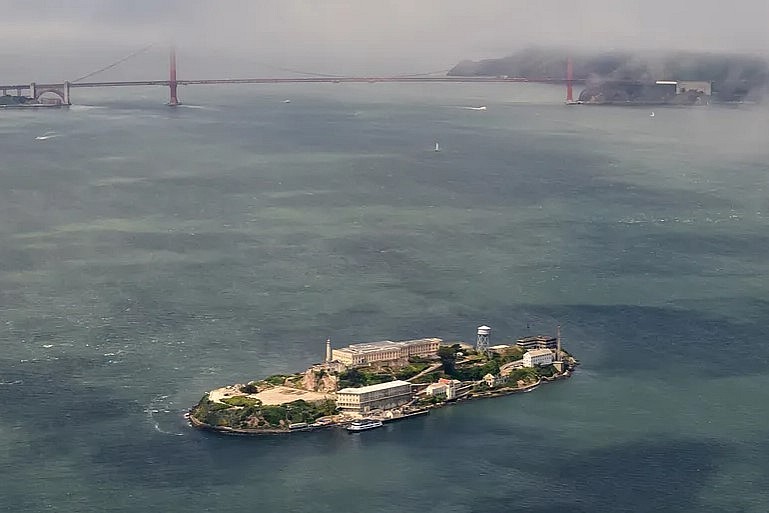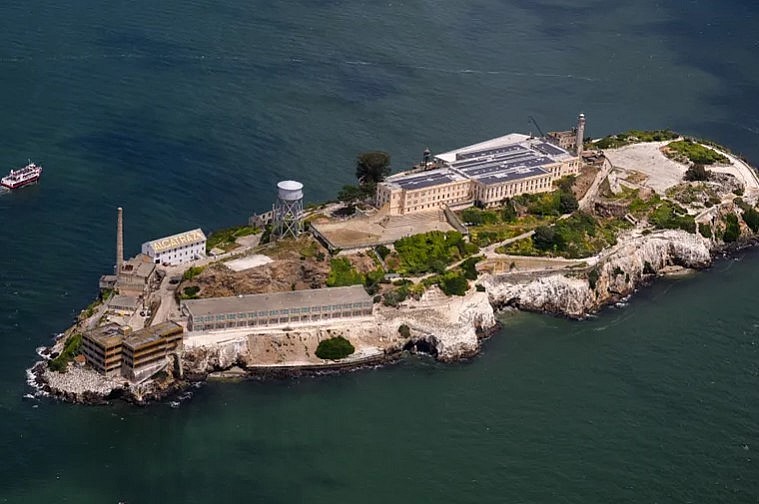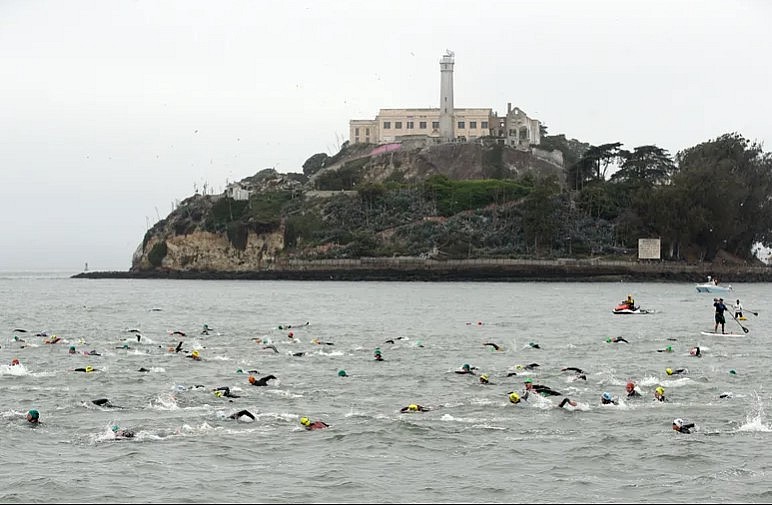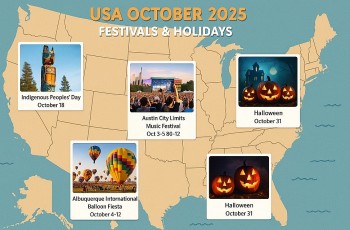Alcatraz Reawakens: History, Location, Tourism and Preservation
In a controversial move sending shockwaves through the political, legal, and human rights communities, President Trump has officially ordered the federal government to reopen Alcatraz Island as a detention facility for high-risk detainees. The announcement marks the first time in over six decades that the notorious prison island—shut down since 1963—will resume its original function as a site of incarceration.
But why Alcatraz? And why now?
This article takes a deep dive into the past, present, and future of Alcatraz: from its military roots to its infamous inmates, escape legends, and its role in pop culture. We also explore what its controversial reopening means in today’s political climate.
 |
| Alcatraz Island |
Where Is Alcatraz?
Alcatraz Island is located in the middle of San Francisco Bay, about 1.25 miles (2 km) offshore from the city. Surrounded by frigid, shark-inhabited waters and strong currents, its geographic isolation once made it the ideal location for housing America’s most dangerous criminals.
Coordinates: 37.8270° N, 122.4230° W
What Is Alcatraz?
Alcatraz is a small, rocky island best known for its role as a maximum-security federal prison between 1934 and 1963. It was designed to hold prisoners deemed too dangerous or escape-prone for other facilities.
But Alcatraz is more than just a prison. It’s a historic symbol of punishment, power, and resistance. Today, it’s also a cultural and environmental landmark, a top-tier tourist attraction, and a frequent backdrop for films, books, and ghost stories.
 |
| Alcatraz Island |
The History of Alcatraz: From Fortress to Folklore
● 1850s–1907: Military Fortress
Originally fortified to protect the San Francisco Bay during the Gold Rush, Alcatraz soon became a military prison by the late 1800s.
● 1934–1963: Federal Penitentiary
Operated by the U.S. Department of Justice, Alcatraz became the final stop for the worst federal offenders. Inmates were locked in 9x5 ft cells for 23 hours a day with minimal contact.
Notable Inmates:
-
Al Capone – Notorious Chicago mob boss.
-
George “Machine Gun” Kelly – Kidnapper and Prohibition gangster.
-
Robert Stroud – “The Birdman of Alcatraz,” known for his avian studies.
-
Alvin “Creepy” Karpis – Public Enemy #1, arrested by J. Edgar Hoover himself.
Famous Escapes and Urban Legends
Despite being advertised as “escape-proof,” Alcatraz witnessed 14 escape attempts involving 36 inmates. The most famous:
The 1962 Escape
-
Frank Morris and brothers John and Clarence Anglin escaped through holes dug with spoons, created papier-mâché dummy heads, and vanished into the Bay on a handmade raft.
-
Officially declared drowned—but many believe they survived. The case remains open.
This story inspired Clint Eastwood’s film Escape from Alcatraz and is still investigated by the U.S. Marshals.
Why Did Alcatraz Close?
Alcatraz was shut down in 1963 due to:
-
High costs: $10 per inmate per day (vs. $3 elsewhere)
-
Infrastructure decay
-
Environmental concerns
-
Changing views on incarceration and rehabilitation
Alcatraz Today: Tourism and Preservation
Until President Trump’s executive order, Alcatraz operated as a historic site and tourist destination, managed by the National Park Service since 1972. Over 1.4 million people visit yearly, exploring its cellblocks, solitary units, and the stunning views from its cliffs.
Highlights:
-
The Alcatraz Cellhouse Tour
-
Exhibits on Native American history
-
Haunted tours and night tours
-
Audio recordings from former guards and inmates
 |
| Alcatraz Island |
Why Reopen Alcatraz Now?
President Trump cited the need for “a secure, symbolic, and historically resonant facility” for housing certain high-risk detainees under new federal initiatives. Critics argue it’s political theater; supporters see it as a return to law-and-order symbolism.
Possible motivations:
-
Political optics: “Tough on crime” branding
-
Geographic isolation: Hard to escape, hard to infiltrate
-
Media value: Headlines grab global attention
Fascinating Facts About Alcatraz
-
Haunted History: Guards and visitors have reported voices, cold spots, and apparitions. It’s ranked among America’s most haunted places.
-
1969 Native Occupation: Indigenous activists occupied Alcatraz for 19 months to protest broken treaties and federal policy. Their graffiti still marks the walls.
-
Hollywood Icon: Featured in films like The Rock (1996), Catch Me If You Can, and X-Men: The Last Stand.
-
Wildlife Refuge: Ironically, it’s now a sanctuary for seabirds, wildflowers, and endangered species like the black-crowned night heron.
The Future of Alcatraz: Prison or Museum?
The move to reopen Alcatraz has sparked legal challenges and public outcry. Conservationists, former inmates, historians, and human rights groups are pushing back.
Key questions:
-
Will detainees be treated according to international law?
-
Can the island’s fragile ecosystem handle reactivation?
-
Will Alcatraz become a new political flashpoint?
Only time—and federal courts—will tell.
Alcatraz as a Top Tourist DestinationSince reopening to the public in 1973, Alcatraz has become one of San Francisco’s most visited landmarks, attracting over 1.4 million tourists every year from around the world. Operated by the National Park Service, the island offers immersive, self-guided experiences that explore its prison history, military roots, natural habitat, and Native American legacy. Key Attractions:• The Alcatraz Cellhouse Audio Tour – Features real stories from former inmates and guards. • Solitary Confinement Cells – Visitors can step inside “The Hole” to experience the darkness. • Recreation Yard & Guard Towers – Preserved structures tell the story of daily prison life. • Alcatraz Gardens – Beautifully restored gardens once maintained by inmates. • Exhibitions – Rotating displays on prison reform, resistance movements, and the 1969 Native American occupation. Stunning Views:Perched in the middle of San Francisco Bay, Alcatraz offers panoramic views of: • The Golden Gate Bridge • The San Francisco skyline • Angel Island and Bay Bridge Special Tours:• Night Tours: Limited-entry, more atmospheric, with behind-the-scenes access. • Birdwatching & Nature Walks: The island is also a nesting site for seabirds like cormorants and herons. Fun Fact:Many visitors report the eerie feeling of being watched — Alcatraz is frequently ranked among the most haunted places in America. |
Conclusion
Alcatraz has always been more than stone and steel. It's a living symbol of justice, fear, control, resistance, and mystery. Its reactivation under the Trump administration may mark a historic turning point — not just in U.S. detention policy, but in the ongoing story of American identity.























